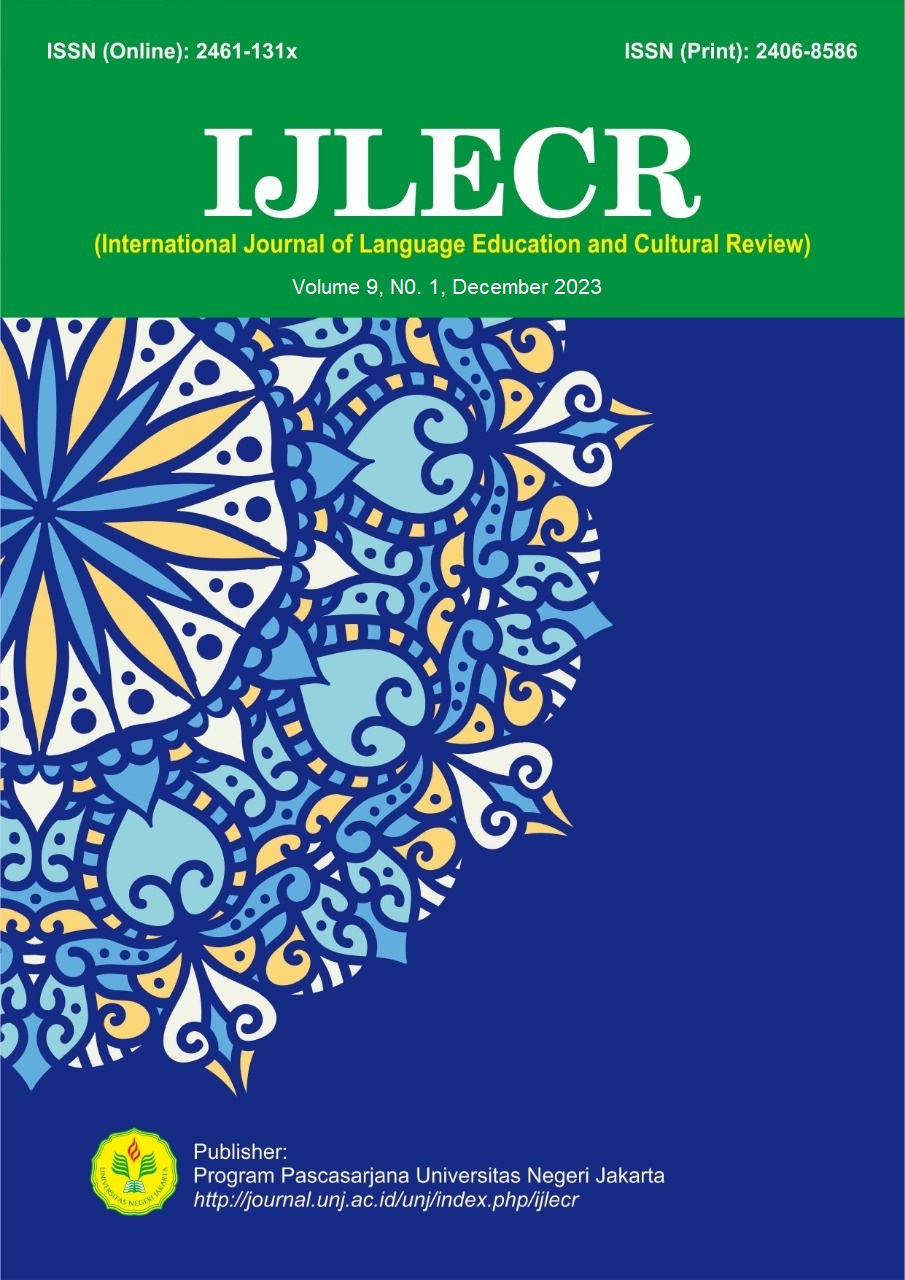An Analysis of HOTS Level Questions on the Indonesian Objective Tests
DOI:
https://doi.org/10.21009/ijlecr.v9i1.33565Kata Kunci:
Analysis, HOTS Level Questions, Indonesian Objective TestsAbstrak
This study aimed to describe HOTS-level questions in the objective tests at the end-of-semester Indonesian exam for class XII at SMA Negeri 3 Bengkulu Tengah. The researcher's description was based on Anderson & Krathwohl's theory. This research was a qualitative descriptive study. The data source in this study was in the form of documents for the end-of-semester exams for class XII Indonesian at SMA Negeri 3 Bengkulu Tengah, totaling 105 questions using documentation data collection techniques. The analysis showed that HOTS questions still tend to be few and have not fully used HOTS-level questions. 11 questions meet the characteristics of HOTS questions or the equivalent of 10% of the data used. 10% of HOTS questions were dominated by the C4 thinking process dimension (analyzing), which consists of 6 questions (6%), the C5 thinking process dimension (evaluating) 4%, and the C6 thinking process dimension (creating) 1%. For the knowledge dimension, the HOTS questions were dominated by questions that measure the conceptual knowledge dimension.
Referensi
Aziz, M., & Rawian, R. (2022, September). Modeling higher order thinking skills and metacognitive awareness in English reading comprehension among university learners. Frontiers in Education, 7. https://doi.org/10.3389/feduc.2022.991015
Djiwandono, M. S. (2008 ). Tes Bahasa pegangan bagi pengajar bahasa. Jakarta: PT Indeks.
Hartiti, E. S. (2020). Analisis soal buatan guru bahasa jepang berbasis higher order thinking skills (hots) dalam soal ujian akhir semester ganjil kelas XII SMA di Surabaya tahun pelajaran 2017/2018. Jurnal mahasiswa UNESA, 4(1). doi: https://doi.org/10.31237/osf.io/8t56w
Kadir, A. (2015). Menyusun dan menganalisis tes hasil belajar. Jurnal Al-Ta’dib, 8(2). https://ejournal.iainkendari.ac.id/al-tadib/article/view/411
Moleong, L. J. (2017). Metodologi penelitian kualitatif. Bandung: PT Remaja Rosdakarya.
Muhibbuddin, M., Artika, W., & Nurmaliah, C. (2023). Improving critical thinking skills through higher order thinking skills (hots)-based science. International Journal of Instruction, 16(4). https://www.e-iji.net/dosyalar/iji_2023_4_17.pdf
Nurgiyantoro, B. (2010). Penilaian dalam pengajaran bahasa dan sastra. Yogyakarta: BPFE.
Nugroho, R. A. (2018). HOTS (kemampuan berpikir tingkat tinggi): Konsep, pembelajaran, penilaian, dan soal-soal. Jakarta: PT Gramedia Widiasarana Indonesia.
Oktarina N. & Armariena, D.N. (2020). Analisis soal tipe higher order thinking skills (HOTS) pada tes objektf pilihan ganda USBN bahasa Indonesia SD/MI. Wahana Didaktika. 18(2). doi: http://dx.doi.org/10.31851/wahanadidaktika.v18i2.4374
Parlan, P., & Rahayu, S. (2021). Students’ higher order thinking skills (HOTS) in metacognitive learning strategy. In AIP Conference Proceedings (Vol. 2330, No. 1). AIP Publishing. https://doi.org/10.1063/5.0043150
Partinem. (2019). Modul peyusunan soal keterampilan berpikir tingkat tinggi (higher order thinking skills) bahasa dan sastra Indonesia. Jakarta: Direktorat Pembinaan Sekolah Menengah Atas.
Qasrawi, R., & Beniabdelrahman, A. (2020). The Higher and lower-order thinking skills (hots and lots) in unlock english textbooks (1st and 2nd editions) based on Bloom's taxonomy: An Analysis Study. International Online Journal of Education and Teaching, 7(3), 744-758.
Retnawati, H., Djidu, H., Kartianom, A., & Anazifa, R. D. (2018). Teachers’ knowledge about higher-order thinking skills and its learning strategy. Problems of Education in the 21st Century, 76(2), 215. http://www.scientiasocialis.lt/pec/node/1121
Rochmat, S. & Hartoyo, Z. Analisis High order thinking skills (hots) taksonomi menganalisis permasalahan Fisika. Science and Physics Education Journal (SPEJ), 1(2). doi: https://doi.org/10.31539/spej.v1i2.268
Setiawati, Sulis. (2019). Analisis higher order thinking skills (hots) siswa sekolah dasar dalam menyelesaikan soal bahasa Indonesia. In Prosiding Seminar Nasional Pendidikan KALUNI. doi:: http://dx.doi.org/10.30998/prokaluni.v2i0.143
Widana, I W. (2017). Modul penyusunan soal higher order thinking skill (hots). Jakarta: Direktorat Pembinaan Sekolah Menengah Kementerian Pendidikan dan Kebudayaan.
Wirandani, T., Kasih, A. C. & Latifah, L. (2019). Analisis butir soal HOTS (high order thinking skill) pada soal ujian sekolah kelas xii mata pelajaran bahasa Indonesia di SMK An-Nahl. Jurnal Pendidikan Bahasa dan Sastra Indonesia (Parole), 2(4). doi: http://dx.doi.org/10.22460/p.v2i4p%25p.2895
Yuniar, M., Rakhmat, C., & Saepulrohman, A. (2015). Analisis hots (higher order thinking skills) pada soal objektif tes dalam mata pelajaran ilmu pengetahuan sosial (IPS) kelas V SD 7 Ciamis. Pedadidaktika (Jurnal Ilmiah Pendidikan Guru Sekolah Dasar), 2(2). https://ejournal.upi.edu/index.php/pedadidaktika/article/view/5845








